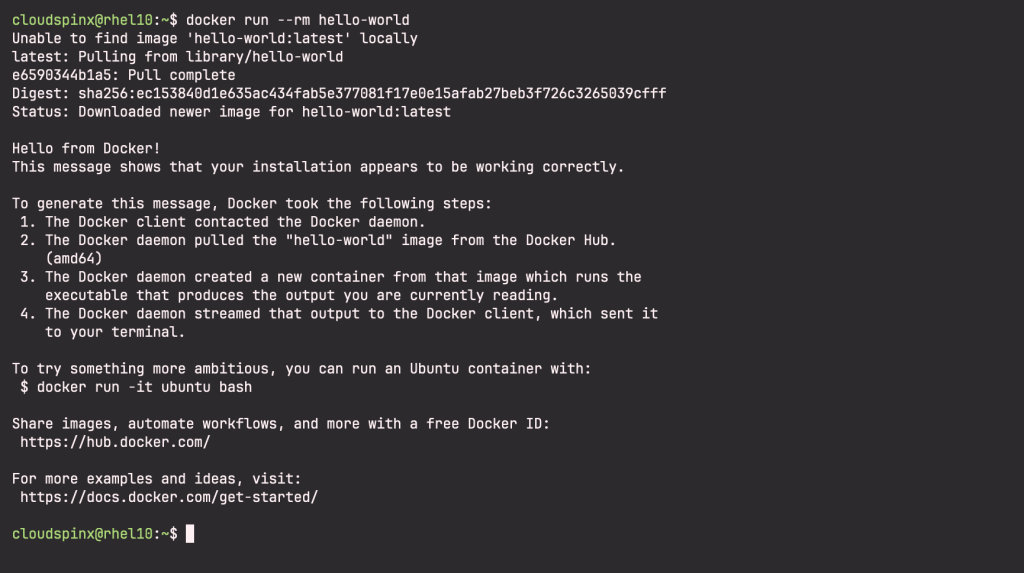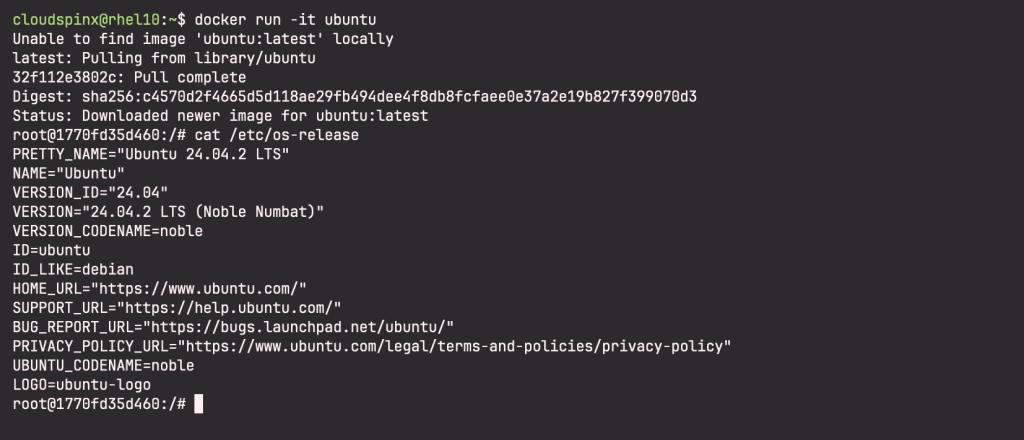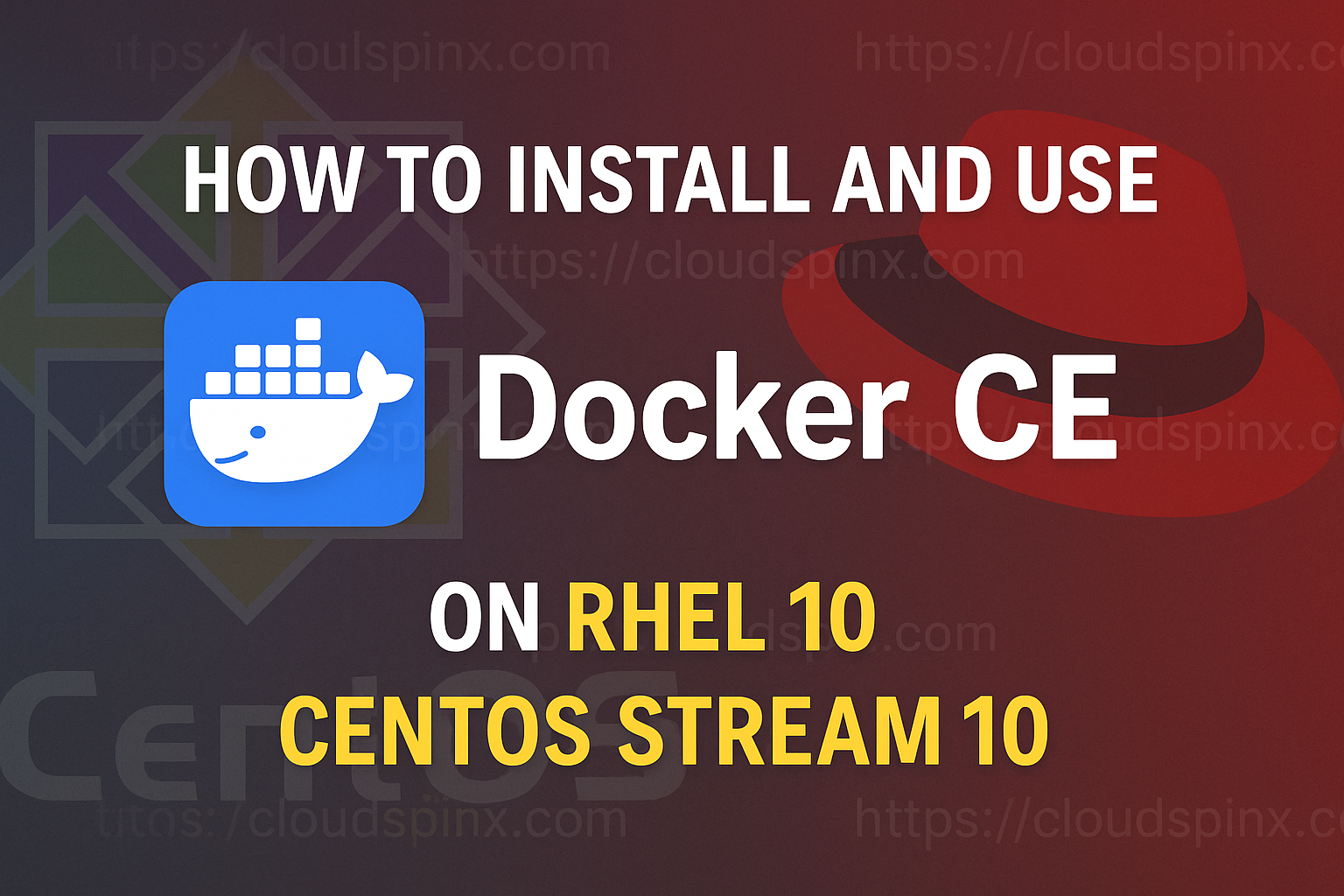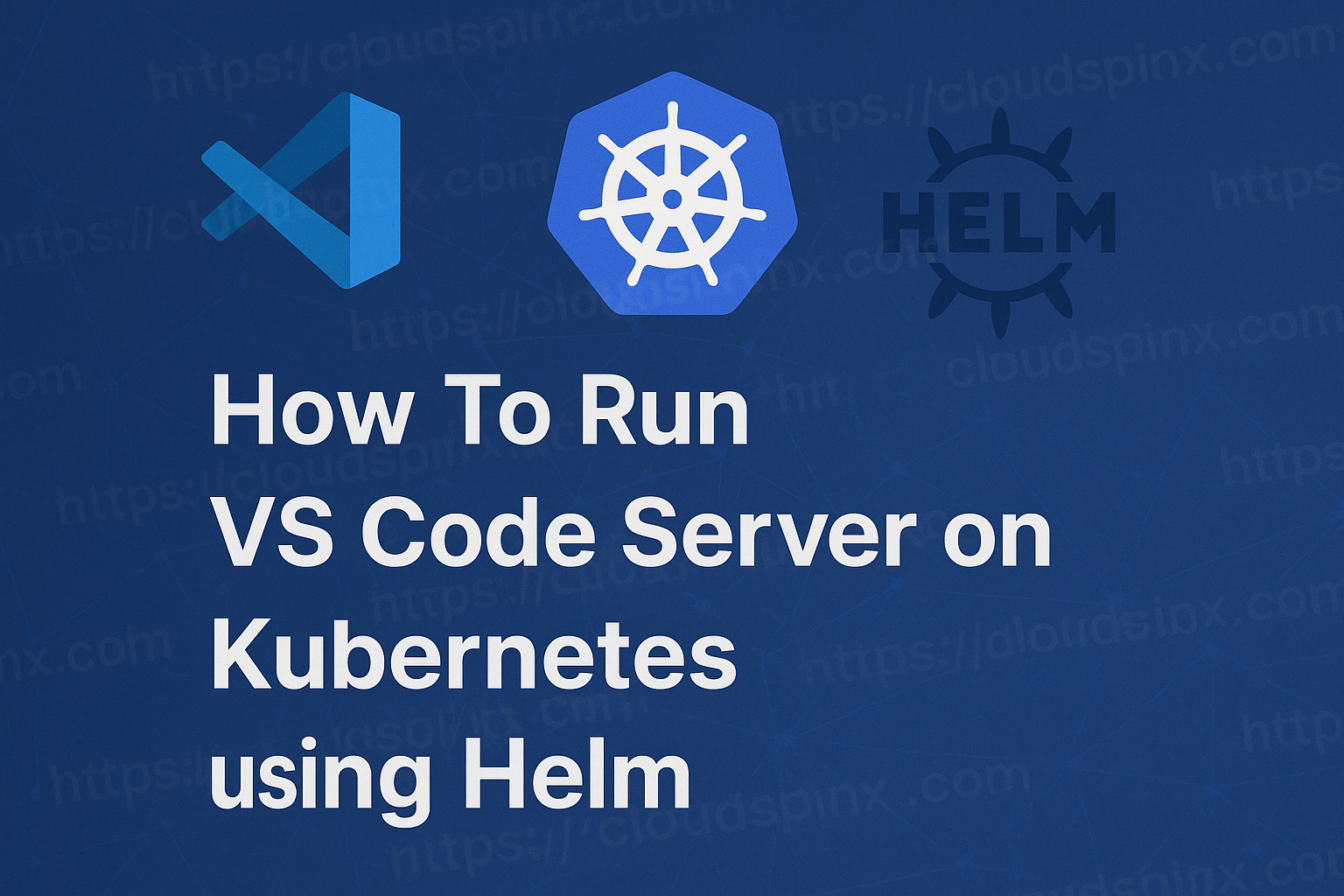Docker can be defined as among the most prominent and most used platforms of containerization available today in the industry space. It offers a great Community Edition (CE) that allows software developers to handle their containers efficiently across different types of Linux systems. In this all-inclusive installation guide, we will systematically take you through the full installation process step by step and explain how to efficiently use Docker CE, especially upon RHEL 10. It is worth noting that Docker cannot be obtained easily through the default repositories of the named operating system.
Prerequisites
Before beginning the installation, ensure you have the following:
- A RHEL 10 | CentOS Stream 10 system.
- A user with sudo privileges or root access.
- Internet access to download the Docker packages.
Step 1: Install Required Dependencies
Before we can install Docker CE, let’s first install the required dependencies, which will provide the necessary tools to enable you configure the repos and the manage packages:
sudo dnf install -y yum-utilsStep 2: Add the Docker CE Repository
So, as we mentioned earlier, Docker CE is not available in the default RHEL repositories, so we’ll use the CentOS Docker CE repository for both CentOS Stream and RHEL:
sudo yum-config-manager --add-repo https://download.docker.com/linux/centos/docker-ce.repoThis repository is maintained by Docker and is compatible with RHEL-based systems, including RHEL 10:
Step 4: Install Docker CE
Update your system and install Docker packages:
sudo yum update
sudo dnf install -y docker-ce docker-ce-cli containerd.io docker-buildx-plugin docker-compose-pluginStep 5: Start and Enable Docker
After Docker is installed, start and enable it to start at boot:
sudo systemctl enable --now dockerTo run Docker commands as a non-root user, add your user to the docker group:
sudo usermod -aG docker $USER
newgrp dockerStep 6: Verify Docker Installation
Verify that docker and docker-compose have been successfully installed:
docker version
docker compose versionAdditionally, you can run the hello-world container:
docker run --rm hello-world
Step 7: Using Docker on RHEL 10 CentOS Stream 10
Here’s how you can use Docker:
1. Running Containers
To run a Docker container, for example, you can run an Nginx web server container with the command below:
docker run -d -p 8080:80 nginx
Access Nginx on port 8080:

2. Listing Running Containers
To list all running Docker containers:
docker psTo list all containers, including stopped ones:
docker ps -a3. Stopping and Removing Containers
To stop a running container:
docker stop <container-id or container-name>To remove a stopped container:
docker rm <container-id or container-name>4. Pulling Docker Images
To pull a Docker image from Docker Hub:
docker pull ubuntuList the pulled images:
docker imagesRun the Ubuntu container:
docker run -it ubuntu
5. Building Docker Images
Docker images can be built by running the docker build command along with a dockerfile:
docker build -t my-custom-image .This will create an image named my-custom-image from the current directory (where the Dockerfile is located).
6. Docker Compose
Docker Compose is a tool for defining and running multi-container applications. It simplifies the control of your entire application stack, making it easy to manage services, networks, and volumes in a single YAML configuration file. Then, with a single command, you create and start all the services from your configuration file.
To use it, create a docker-compose.yml file with the necessary configuration. For example:
services:
web:
image: nginx
ports:
- "8080:80"
db:
image: mysql
environment:
MYSQL_ROOT_PASSWORD: P@ssw0rdThen, run
docker compose up -dList the running containers:
docker ps
Conclusion
With the smooth operation of your system’s Docker, you get the amazing ability to take full use of its significant features, which enable you to efficiently build, deploy, and scale applications through isolated containers specially crafted to operate autonomously of each other. No matter if you deal with relatively basic applications or oversee complex and complicated microservices architectures, the use of Docker on RHEL 10 becomes the perfect solution to maintain the same consistency across all your various environments, allowing your deployment processes to be much more reliable and streamlined.
More articles from us:









